The glittery New Year’s ball in Time’s Square is a classic part of the countdown to the new year. But most preschoolers aren’t awake for this part of the night. Give them their own New Year’s ball fun with this fun fizzing STEAM activity!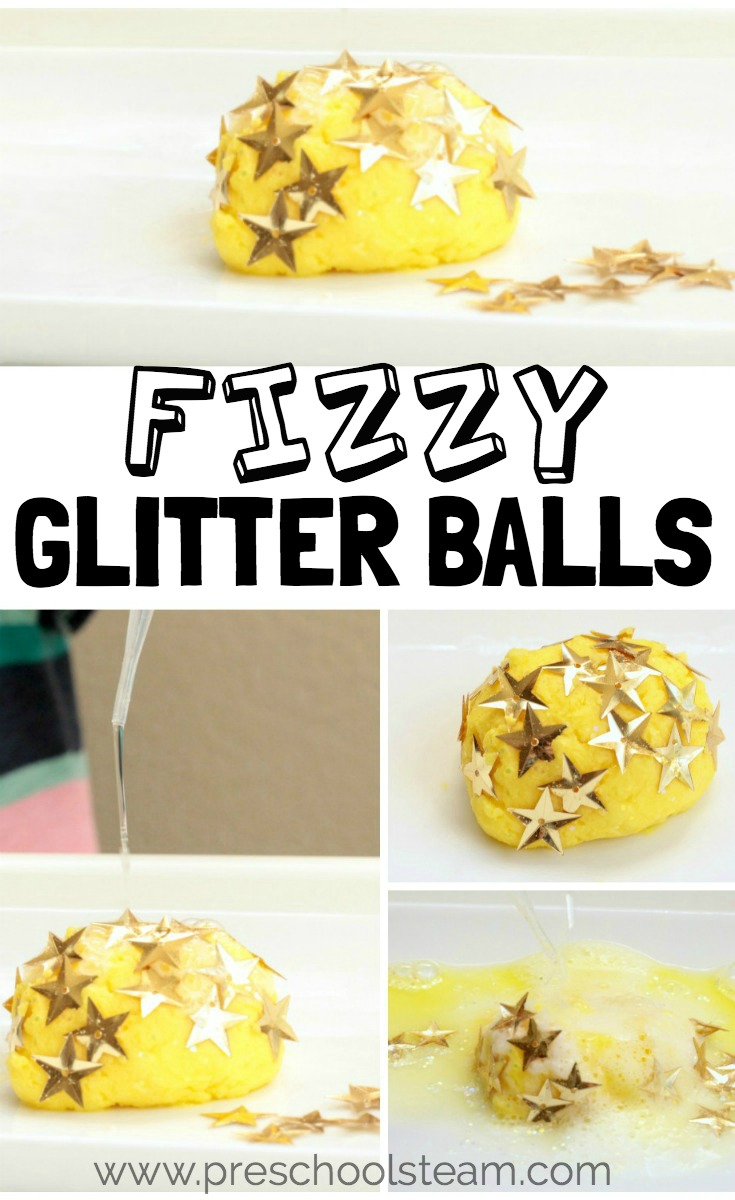
Fizzing New Year’s Ball A Preschool STEAM Activity
Objective: To learn about chemical reactions.
Materials: Yellow food coloring, glitter, baking soda, pipettes, vinegar, gold plastic stars, and a plastic tray.
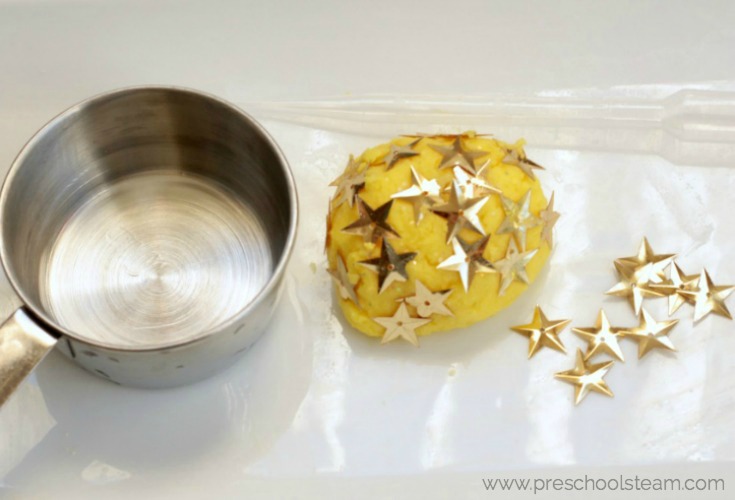
Ask: What will happen when vinegar and baking soda mix? Will the ball keep its shape?
Learn: Preschoolers will learn about acids, bases, and chemical reactions in this simple STEAM project.
Before you invite the preschoolers over, make your baking soda ball. Mix about 1/3 of a cup of baking soda with enough water (dyed yellow with food coloring) to make a moldable paste. Add some glitter to the paste for extra fun. Shape the baking soda into one ball per kid.
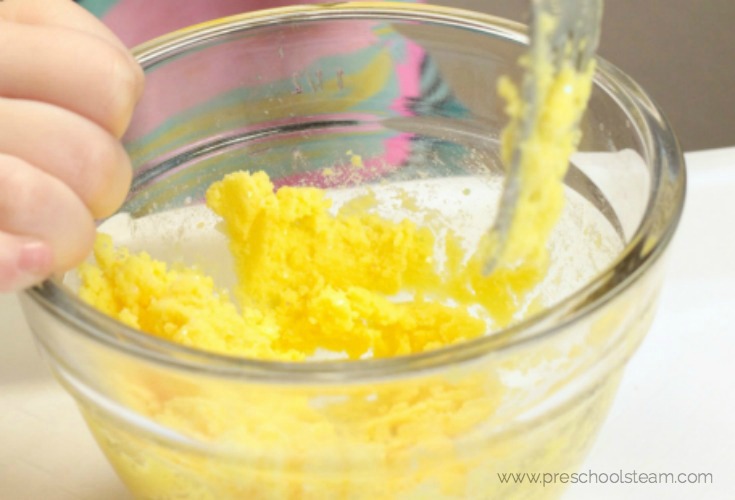
Set the ball on a plastic tray. Give the preschoolers plastic stars. Let the preschoolers cover the balls with plastic stars to look more like the real New Year’s ball.
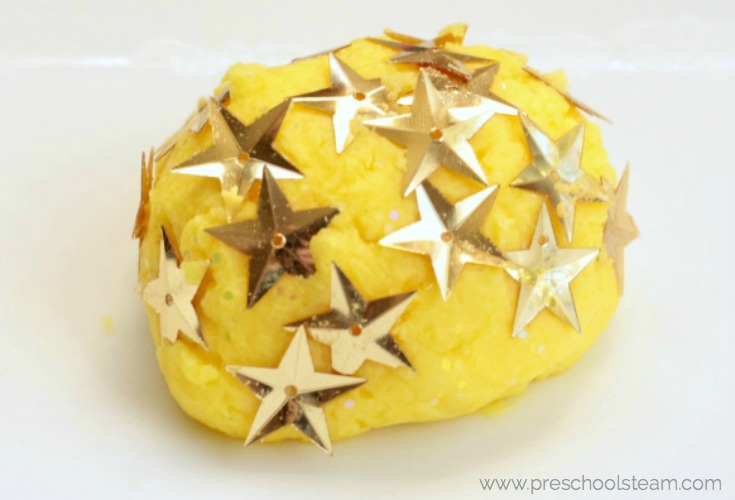
After the balls are decorated, give each preschooler a pipette and a small container of vinegar. Show the preschoolers how to move the vinegar onto the New Year’s ball. It will magically fizz and start to melt away!
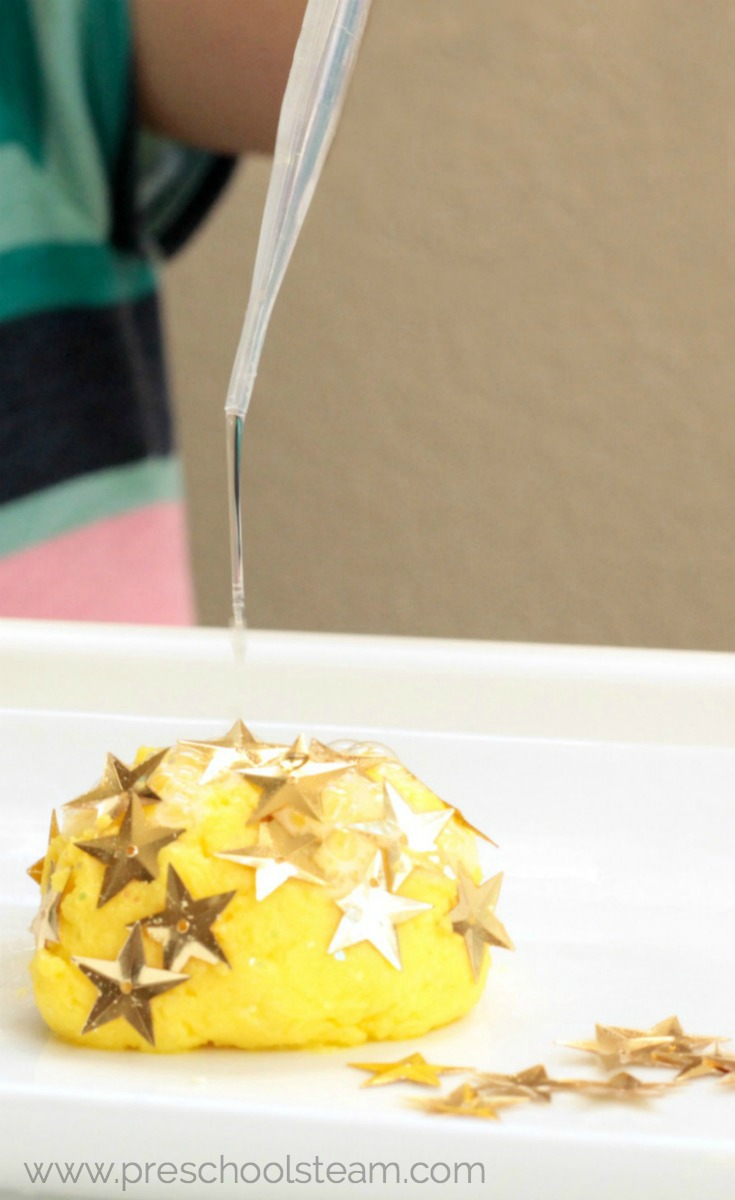
Preschoolers can keep adding vinegar until the ball is completely dissolved. What’s left is a pretty, glittery pool of stars and glitter.
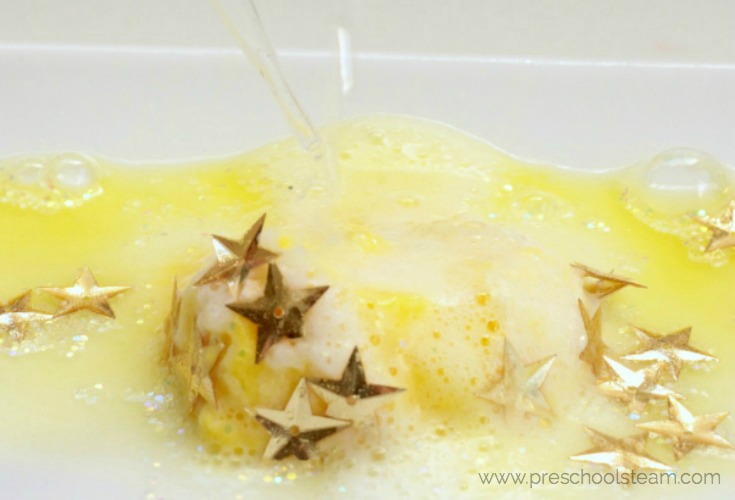
STEAM Integration
Science: Discuss chemical reactions and why vinegar (an acid) and baking soda (a base) cause a reaction.
Technology: Research the real New Year’s ball and how the tradition of dropping the ball at midnight on January 1st became a tradition.
Engineering: Kids can help form the baking soda balls and decorate them with their plastic stars.
Art: The shiny stars and colored baking soda make this experiment artistic.
Math: Practice counting down from 10 before adding vinegar to the baking soda New Year’s ball for a preschool-friendly New Year’s countdown!
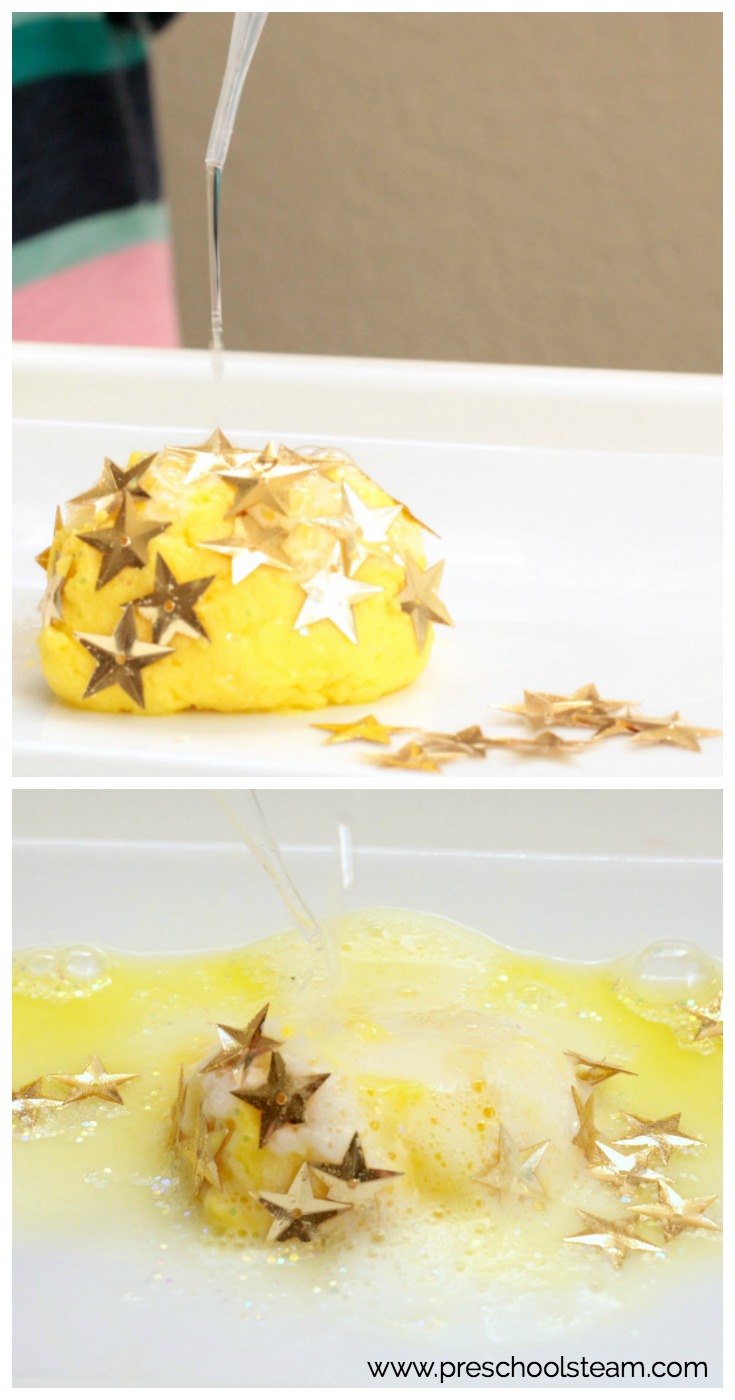
Fantastic activity! How would you describe why the reaction (acid + base) takes place to preschoolers?